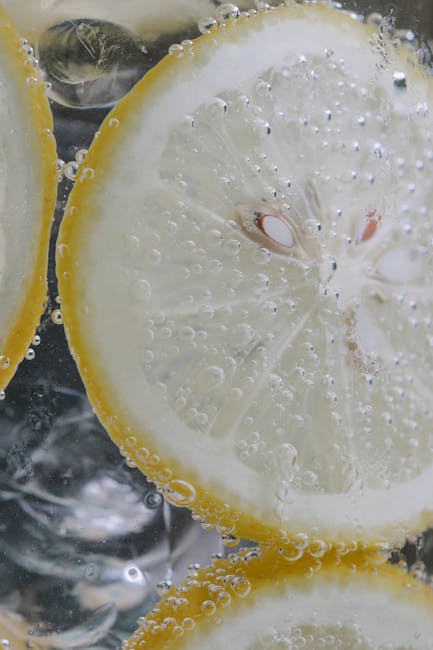The Salt and Ice Cube Trick: More Than Just a Party Trick
The seemingly simple act of adding salt to ice to make it colder than it would be on its own has fascinated people for generations. It’s a common trick used to quickly chill drinks, but the underlying science is surprisingly complex and far-reaching. This comprehensive guide delves into the fascinating world of the salt and ice cube trick, exploring its scientific principles, various applications, and potential safety considerations.
Understanding the Science Behind the Chill
The magic behind the salt and ice cube trick lies in a phenomenon called freezing point depression. Pure water freezes at 0°C (32°F). However, when you add a solute, like salt (sodium chloride), to the water, it disrupts the hydrogen bonds between water molecules, making it more difficult for them to form the crystalline structure of ice. This disruption lowers the freezing point of the water-salt solution.

The salt ions (Na+ and Cl-) essentially get in the way of the water molecules trying to arrange themselves into a solid ice structure. This requires a lower temperature for the freezing process to occur. In essence, the salt solution needs to be colder than 0°C to freeze.
As the ice melts in the presence of salt, it absorbs heat from its surroundings, including the surrounding ice and any liquid in contact with it. This absorption of heat results in a significant decrease in temperature. The colder the surrounding liquid, the greater the cooling effect.
Applications of the Salt and Ice Cube Trick
The practical applications of this principle extend far beyond simply chilling drinks. Here are some notable examples:
- Ice Cream Making: The salt-ice mixture creates a cold environment, far below the freezing point of water, necessary to freeze the ice cream mixture quickly and effectively. The lower temperature prevents the formation of large ice crystals, leading to a smoother, creamier texture.
- Cold Packs: Many instant cold packs utilize the principles of freezing point depression. They contain a bag of water and a bag of salt, which are mixed to create a cold pack. This is a practical solution for temporary pain relief in injuries.
- De-icing Roads and Pavements: Salt is widely used to de-ice roads and sidewalks during winter. The salt lowers the freezing point of water, preventing ice formation or melting existing ice.
- Food Preservation: Historically, salt has been used to preserve food by inhibiting the growth of microorganisms. While the freezing point depression is not the primary mechanism, the lower temperature contributes to this effect.
- Scientific Experiments: The salt and ice cube trick serves as a simple yet effective demonstration of freezing point depression and other thermodynamic principles in educational settings.
Factors Affecting the Cooling Effect
The effectiveness of the salt and ice cube trick isn’t solely dependent on the amount of salt used. Several factors influence the final temperature achieved:
- Type of Salt: Different salts have different freezing point depression effects. Sodium chloride (common table salt) is frequently used, but other salts could yield different results.
- Salt Concentration: Higher salt concentration leads to greater freezing point depression, resulting in lower temperatures. However, there’s a point of diminishing returns, and excessively high concentrations may not significantly improve the cooling.
- Ice Surface Area: A larger surface area of ice increases the rate of melting and thus the rate of cooling.
- Ambient Temperature: The ambient temperature affects the rate of heat transfer and, consequently, the final temperature achievable.
- Insulation: Using an insulated container helps maintain the lower temperature for a longer period.
Safety Precautions
While generally safe, using salt and ice requires some precautions:
- Avoid Skin Contact: Prolonged contact with the ice and salt mixture can cause frostbite. Always handle the mixture with gloves or other protective measures.
- Proper Disposal: Avoid dumping large quantities of salt water into the environment, as it can have negative impacts on ecosystems.
- Supervision: Supervise children when they are using the salt and ice cube trick to prevent accidents.
Beyond the Basics: Exploring More Complex Applications
The principles of freezing point depression extend to various advanced applications in fields like cryogenics, materials science, and chemical engineering. For example, cryoprotective agents, often used to preserve cells and tissues, work by lowering the freezing point of water within the cells, preventing ice crystal formation that can damage the cell structures.
In the chemical industry, freezing point depression is used in separation techniques. By adding a solute, certain components in a mixture can be separated based on their differing freezing points.

Conclusion: A Simple Trick with Profound Implications
The seemingly simple salt and ice cube trick showcases the power of basic scientific principles. Understanding freezing point depression allows us to appreciate the numerous applications of this phenomenon, from everyday kitchen tasks to advanced scientific and industrial processes. By understanding the underlying science and taking necessary safety precautions, we can harness the power of this simple trick for a variety of purposes.
This exploration underscores the interconnectedness of science and everyday life. The seemingly mundane act of chilling a drink opens a window into a complex world of scientific principles with far-reaching implications.


